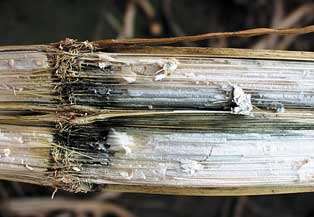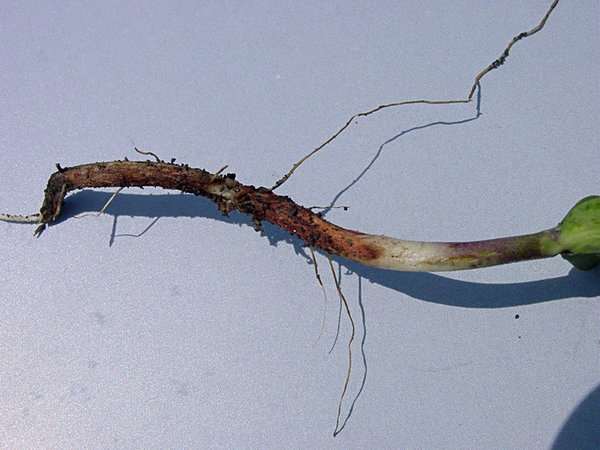Producers need to be vigilant in their scouting
By Diego Flammini
Assistant Editor, North American Content
Farms.com
The cold and wet spring has left many fields vulnerable to disease.
Farms.com caught up with Whitney Monin, a Kentucky and Southern Indiana-based agronomist with Channel Seeds, to give farmers an idea of what diseases to watch for in their fields.
Farms.com: Current weather conditions can lead to disease pressure in fields. What are some diseases producers should be looking out for?
Whitney Monin (WM): This spring has been exceptionally cool and wet, and generally that does not bode well for seedling diseases. Probably the most prevalent seedling disease farmers should be looking for, in both corn and soybeans, is seedling blight.

Whitney Monin
Photo: Twitter
Seedling blight is caused by the pathogen Pythium. The most common symptom producers can see is damping off, which basically means ... producers would see dead (plant) carcasses on top of the soil. The above-ground tissue would look almost strangled by the fungus.
Farms.com: What about challenges further along in the crop’s development?
WM: As the crops get further into the vegetative stages, I would suggest producers be on the lookout for increased foliar disease and for fusarium crown rot and anthracnose stalk rot in corn later in the growing season. … In early planted soybeans, scout for sudden death syndrome (SDS).
The SDS pathogen loves cool and wet conditions. Just because we can’t see it now doesn’t mean the pathogen isn’t colonizing in the roots. SDS can certainly rob yield from producers.

Anthracnose stalk rot
Photo: OMAFRA
Farms.com: Has there been a disease you didn’t expect to see, given the conditions?
WM: It’s not totally unexpected but more of a result of the weather, but I’ve seen quite a bit of rhizoctonia in soybeans. The pathogen seems to be piggy backing on PPO herbicide injury, which increases in cool wet conditions. The burning of PPO herbicides to the hypocotyls and cotelydons of soybean seedlings seem to be opening entry ways and, no different than if a person cut themselves, the opening presents an area for infection to enter and spread.

Rhizoctonia
Photo: Pioneer
Farms.com: How important is a producer’s scouting regimen to ensure he or she is catching these pathogens early?
WM: Scouting is paramount and if producers are going to decide if they have reached the economic threshohold to treat for a given disease. Treating would of course mean adding another line item to their operating cost this year… fungicide. Being proactive and talking to individual seed reps about disease tolerances and scouting for disease can help farmers be ready to pull the trigger on fungicide.
Growers also need to consider yield expectations, harvestability, storage and other factors could prior to making their decision.